![]() Statistics Canada says the Canadian economy shrunk in the month of February, but declines might not last long, as early signs for March point to moderate GDP growth. The agency says real gross domestic product decreased 0.2% in February. This follows previous growth in the month of January of 0.4% overall. While goods-producing industries pulled the economy up in January, Statistics Canada says it saw a decline of 0.6% overall for February. …Statistics Canada says 12 of the country’s 20 industrial sectors saw declines in February. But the manufacturing sector bucked the trend — that industry saw a 0.6% rise in February. …Advanced information from Statistics Canada indicates that real GDP increased by 0.1 per cent last month. The agency says the annualized growth rate for the first quarter of 2025 based on the March flash estimate is 1.5 per cent.
Statistics Canada says the Canadian economy shrunk in the month of February, but declines might not last long, as early signs for March point to moderate GDP growth. The agency says real gross domestic product decreased 0.2% in February. This follows previous growth in the month of January of 0.4% overall. While goods-producing industries pulled the economy up in January, Statistics Canada says it saw a decline of 0.6% overall for February. …Statistics Canada says 12 of the country’s 20 industrial sectors saw declines in February. But the manufacturing sector bucked the trend — that industry saw a 0.6% rise in February. …Advanced information from Statistics Canada indicates that real GDP increased by 0.1 per cent last month. The agency says the annualized growth rate for the first quarter of 2025 based on the March flash estimate is 1.5 per cent.
 Risks are high that the global economy will slip into recession this year, according to a majority of economists in a Reuters poll, in which scores said US President Donald Trump’s tariffs have damaged business sentiment. Just three months ago, the same group of economists covering nearly 50 economies had expected the global economy to grow at a strong, steady clip. …While Trump has suspended the heaviest tariffs imposed on almost all trading partners for a few months, a 10% blanket duty remains, as well as a 145% tariff on China, the United States’ largest trading partner. …Showing unusual unanimity… three-quarters of economists cut their 2025 global growth forecast, bringing the median to 2.7% from 3.0% in a January poll. …China and Russia were forecast to grow 4.5% and 1.7% respectively, outperforming the US. However, growth forecasts for Mexico and Canada were downgraded from January by some of the largest margins, to 0.2% and 1.2%.
Risks are high that the global economy will slip into recession this year, according to a majority of economists in a Reuters poll, in which scores said US President Donald Trump’s tariffs have damaged business sentiment. Just three months ago, the same group of economists covering nearly 50 economies had expected the global economy to grow at a strong, steady clip. …While Trump has suspended the heaviest tariffs imposed on almost all trading partners for a few months, a 10% blanket duty remains, as well as a 145% tariff on China, the United States’ largest trading partner. …Showing unusual unanimity… three-quarters of economists cut their 2025 global growth forecast, bringing the median to 2.7% from 3.0% in a January poll. …China and Russia were forecast to grow 4.5% and 1.7% respectively, outperforming the US. However, growth forecasts for Mexico and Canada were downgraded from January by some of the largest margins, to 0.2% and 1.2%. VANCOUVER, BC – West Fraser Timber reported first quarter results of 2025. …First quarter sales were $1.459 billion, compared to $1.405 billion in the fourth quarter of 2024. First quarter earnings were $42 million, compared to a loss of $62 million in the fourth quarter of 2024. The fourth quarter included a non-cash impairment loss of $70 million. …First quarter Adjusted EBITDA was $195 million compared to $140 million in the fourth quarter of 2024. ..The Lumber segment has experienced a slower than expected start to the year, owing to transportation and weather challenges that have influenced shipments as well as uncertainty related to demand impacts from the U.S. administration’s shifting tariff policies. …The global pulp market has begun to experience disruption with the economic impact of US tariffs creating considerable demand uncertainty in Chinese markets. As such, we anticipate NBSK pricing weakness over the near- to medium-term and a potentially significant adverse financial impact on our Pulp & Paper segment.
VANCOUVER, BC – West Fraser Timber reported first quarter results of 2025. …First quarter sales were $1.459 billion, compared to $1.405 billion in the fourth quarter of 2024. First quarter earnings were $42 million, compared to a loss of $62 million in the fourth quarter of 2024. The fourth quarter included a non-cash impairment loss of $70 million. …First quarter Adjusted EBITDA was $195 million compared to $140 million in the fourth quarter of 2024. ..The Lumber segment has experienced a slower than expected start to the year, owing to transportation and weather challenges that have influenced shipments as well as uncertainty related to demand impacts from the U.S. administration’s shifting tariff policies. …The global pulp market has begun to experience disruption with the economic impact of US tariffs creating considerable demand uncertainty in Chinese markets. As such, we anticipate NBSK pricing weakness over the near- to medium-term and a potentially significant adverse financial impact on our Pulp & Paper segment.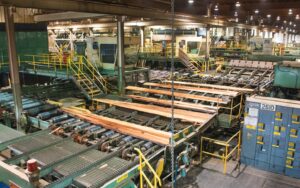 President Trump is reshaping America’s timber industry, directing federal agencies to boost domestic lumber production while investigating whether foreign imports pose a national security threat. The US construction market consumes more than 50 billion board feet of lumber annually, with domestic production currently meeting only 70% of demand. Canada fills most of the gap, supplying roughly a quarter of America’s lumber needs. …His executive order instructs the Forest Service and Department of Interior to increase timber sales from public lands. Industry experts, however, question the feasibility of such rapid transformation. Pete Stewart, of ResourceWise, points out significant challenges: “The U.S. would have to build 70 new sawmills to make up the difference.” The geographic reality also presents obstacles. While Southern forests from Virginia to eastern Texas grow 30% more trees than local sawmills demand, forests in the Northwest are already harvesting at capacity. …Critics also question the national security rationale.
President Trump is reshaping America’s timber industry, directing federal agencies to boost domestic lumber production while investigating whether foreign imports pose a national security threat. The US construction market consumes more than 50 billion board feet of lumber annually, with domestic production currently meeting only 70% of demand. Canada fills most of the gap, supplying roughly a quarter of America’s lumber needs. …His executive order instructs the Forest Service and Department of Interior to increase timber sales from public lands. Industry experts, however, question the feasibility of such rapid transformation. Pete Stewart, of ResourceWise, points out significant challenges: “The U.S. would have to build 70 new sawmills to make up the difference.” The geographic reality also presents obstacles. While Southern forests from Virginia to eastern Texas grow 30% more trees than local sawmills demand, forests in the Northwest are already harvesting at capacity. …Critics also question the national security rationale.  This is the USD 64,000 question. …What we currently know is that Canadian softwood lumber carries a 14.5% tariff rate, which could expand to 34.45% later in 2025. …If we split the difference between the NAHB’s and FEA’s estimates, the average sized new home consumes 34,000 bf of lumber. As such, should the tariff increase to 34.45%. …,Should the administration levy an additional 25% “immigration and Fentanyl tariff” on Canadian lumber (which is currently exempt), the cost/home would rise to approximately USD 1,100/home. …In reality, total wood usage in home construction includes a variety of wood types including softwood lumber, oriented strand board, engineered lumber and plywood. Each category has its own pricing and supply dynamics. One additional point… It is estimated that the repair and remodel (R&R) market accounts for 35-40% of lumber demand while single-family home construction accounts for an additional 35%. …For more on the latest real estate trends,
This is the USD 64,000 question. …What we currently know is that Canadian softwood lumber carries a 14.5% tariff rate, which could expand to 34.45% later in 2025. …If we split the difference between the NAHB’s and FEA’s estimates, the average sized new home consumes 34,000 bf of lumber. As such, should the tariff increase to 34.45%. …,Should the administration levy an additional 25% “immigration and Fentanyl tariff” on Canadian lumber (which is currently exempt), the cost/home would rise to approximately USD 1,100/home. …In reality, total wood usage in home construction includes a variety of wood types including softwood lumber, oriented strand board, engineered lumber and plywood. Each category has its own pricing and supply dynamics. One additional point… It is estimated that the repair and remodel (R&R) market accounts for 35-40% of lumber demand while single-family home construction accounts for an additional 35%. …For more on the latest real estate trends,  President Trump is forging ahead with his aggressive tariff campaign, moving on from “reciprocal” tariffs to the sector-specific tariffs he promised. To do so will involve Trump’s continued application of Section 232 of the Trade Expansion Act of 1962, which allows a president to impose tariffs to protect or bolster domestic industries if there are deemed potential national security threats. What used to be a rarely employed trade provision has been a favorite instrument. The Commerce Department previously launched Section 232 probes into copper and lumber. And earlier this month, the administration started investigating pharmaceuticals and semiconductors. …Softwood lumber is a critical and preferred ingredient for homebuilding, and 30% of it is imported by the US. Homebuilders warn that tariffs on softwood lumber and other materials could further exacerbate the housing affordability crisis. Higher costs of lumber imports could also affect other products, such as furniture and even toilet paper.
President Trump is forging ahead with his aggressive tariff campaign, moving on from “reciprocal” tariffs to the sector-specific tariffs he promised. To do so will involve Trump’s continued application of Section 232 of the Trade Expansion Act of 1962, which allows a president to impose tariffs to protect or bolster domestic industries if there are deemed potential national security threats. What used to be a rarely employed trade provision has been a favorite instrument. The Commerce Department previously launched Section 232 probes into copper and lumber. And earlier this month, the administration started investigating pharmaceuticals and semiconductors. …Softwood lumber is a critical and preferred ingredient for homebuilding, and 30% of it is imported by the US. Homebuilders warn that tariffs on softwood lumber and other materials could further exacerbate the housing affordability crisis. Higher costs of lumber imports could also affect other products, such as furniture and even toilet paper.
 Tariff uncertainty continued to weigh on Vancouver’s housing market in March, deepening the slowdown in activity. Escalating US trade actions have fuelled fears of a recession, job losses and equity market volatility, pushing many potential buyers to the sidelines. The latest data from the Greater Vancouver and Fraser Valley real estate boards showed a deepening of the sales pullback in March. MLS sales fell 17.6% year over year. …The severe drop in home sales aligns with declining business confidence, which has plunged to record lows—a pretty good bet that weak confidence is playing out in housing. With sales held back, inventory has ballooned. Active listings were up 43% year over year and marching higher. …Meanwhile, after recording a surplus in merchandise trade balance for two consecutive months, Canada’s trade balance shifted to a deficit in February as exports retreated significantly following a frontloading of US imports.
Tariff uncertainty continued to weigh on Vancouver’s housing market in March, deepening the slowdown in activity. Escalating US trade actions have fuelled fears of a recession, job losses and equity market volatility, pushing many potential buyers to the sidelines. The latest data from the Greater Vancouver and Fraser Valley real estate boards showed a deepening of the sales pullback in March. MLS sales fell 17.6% year over year. …The severe drop in home sales aligns with declining business confidence, which has plunged to record lows—a pretty good bet that weak confidence is playing out in housing. With sales held back, inventory has ballooned. Active listings were up 43% year over year and marching higher. …Meanwhile, after recording a surplus in merchandise trade balance for two consecutive months, Canada’s trade balance shifted to a deficit in February as exports retreated significantly following a frontloading of US imports.
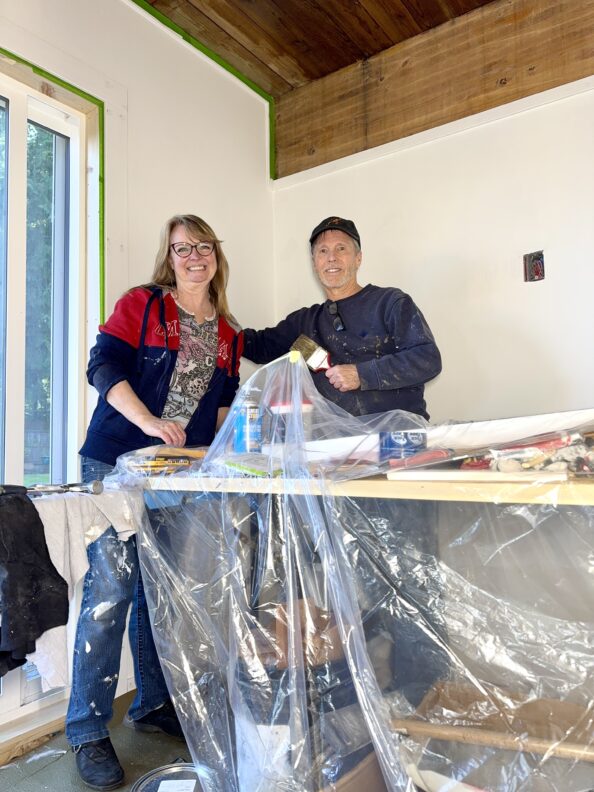 To kick off National Home Remodeling Month in May, which promotes the benefits of hiring a professional remodeler, the National Association of Home Builders (NAHB) has highlighted
To kick off National Home Remodeling Month in May, which promotes the benefits of hiring a professional remodeler, the National Association of Home Builders (NAHB) has highlighted 
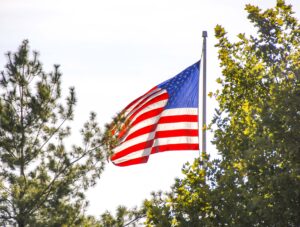 The US economy contracted in the first three months of 2025 on an import surge at the start of President Trump’s second term in office as he wages a potentially costly trade war. Gross domestic product fell at a 0.3% annualized pace, according to a Commerce Department report adjusted for seasonal factors and inflation. This was the first quarter of negative growth since Q1 of 2022. Economists had been looking for a gain of 0.4% after GDP rose by 2.4% in the fourth quarter of 2024. However, over the past day or so some Wall Street economists changed their outlook to negative growth, largely because of an unexpected rise in imports as companies and consumers sought to get ahead of the Trump tariffs implemented in early April. …The more telling number for the future of the expansion was consumer spending, and it grew, but at a relatively weak pace,” said Robert Frick.
The US economy contracted in the first three months of 2025 on an import surge at the start of President Trump’s second term in office as he wages a potentially costly trade war. Gross domestic product fell at a 0.3% annualized pace, according to a Commerce Department report adjusted for seasonal factors and inflation. This was the first quarter of negative growth since Q1 of 2022. Economists had been looking for a gain of 0.4% after GDP rose by 2.4% in the fourth quarter of 2024. However, over the past day or so some Wall Street economists changed their outlook to negative growth, largely because of an unexpected rise in imports as companies and consumers sought to get ahead of the Trump tariffs implemented in early April. …The more telling number for the future of the expansion was consumer spending, and it grew, but at a relatively weak pace,” said Robert Frick. 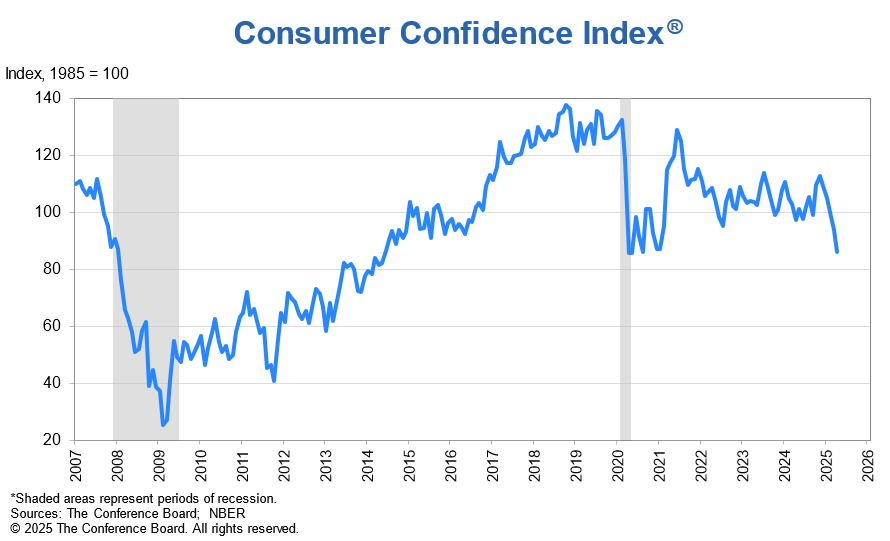

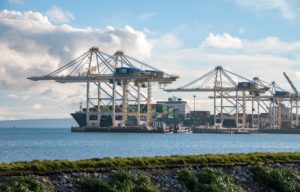 The clock is ticking on trade deals that the US will need to strike with many nations, most notably China, to avoid what Trump’s Treasury Secretary has described as an “unsustainable” tariffs war. But in the U.S. farming sector, the damage has already been done and the economic crisis already begun. US agriculture exporters say the global backlash to President Trump’s tariffs is punishing them, especially a decline in Chinese buying of US farm products, leading to cancelled export orders and layoffs. Peter Friedmann, of the Agriculture Transportation Coalition …says “massive” financial losses are already being shared by its members. …A wood pulp and paperboard exporter reported to the trade group the immediate cancellation or hold of 6,400 metric tons in a warehouse and a hold of 15 railcars sitting in what is known in the supply chain as “demurrage,” when fees are charged for delayed movement of goods.
The clock is ticking on trade deals that the US will need to strike with many nations, most notably China, to avoid what Trump’s Treasury Secretary has described as an “unsustainable” tariffs war. But in the U.S. farming sector, the damage has already been done and the economic crisis already begun. US agriculture exporters say the global backlash to President Trump’s tariffs is punishing them, especially a decline in Chinese buying of US farm products, leading to cancelled export orders and layoffs. Peter Friedmann, of the Agriculture Transportation Coalition …says “massive” financial losses are already being shared by its members. …A wood pulp and paperboard exporter reported to the trade group the immediate cancellation or hold of 6,400 metric tons in a warehouse and a hold of 15 railcars sitting in what is known in the supply chain as “demurrage,” when fees are charged for delayed movement of goods.
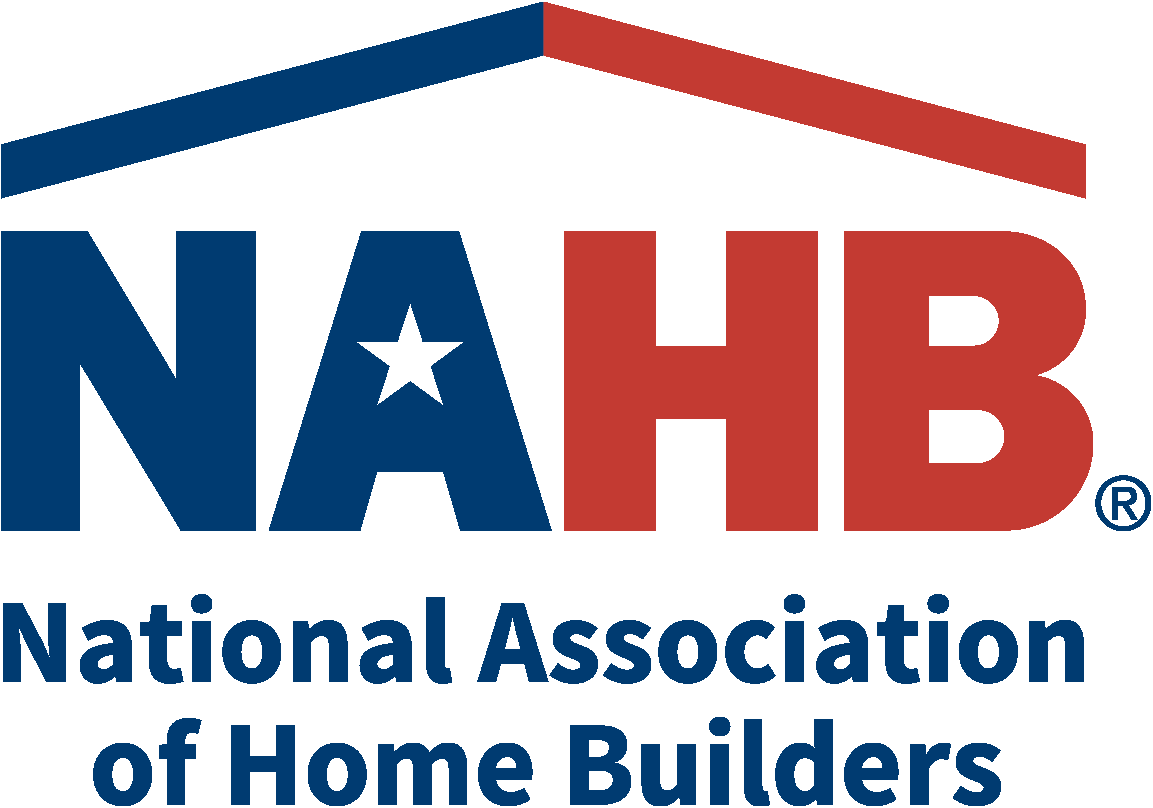

 February 2025 Southern Pine lumber exports (treated and untreated) were up 4.7% to 40.8 Mbf over January but were down 15% over February 2024, according to February 2025 data from the USDA’s Foreign Agriculture Services’ Global Agricultural Trade System. When looking at the report by dollar value, Southern Pine exports are down 4% compared to the first two months of 2024 at $32 million. Mexico led the way at $8.4 million, followed by the Dominican Republic at $6.7 million, and Canada at $3.3 million. The total global value in February, however, hit a five-month high of $16.5 million. Treated lumber exports, meanwhile, were down 8% to $18.3 million through the first two months of 2025 compared to a year ago led by Jamaica at $3 million, the Leeward-Windward Islands at $2.6 million, and the Netherlands Antilles with $2 million.
February 2025 Southern Pine lumber exports (treated and untreated) were up 4.7% to 40.8 Mbf over January but were down 15% over February 2024, according to February 2025 data from the USDA’s Foreign Agriculture Services’ Global Agricultural Trade System. When looking at the report by dollar value, Southern Pine exports are down 4% compared to the first two months of 2024 at $32 million. Mexico led the way at $8.4 million, followed by the Dominican Republic at $6.7 million, and Canada at $3.3 million. The total global value in February, however, hit a five-month high of $16.5 million. Treated lumber exports, meanwhile, were down 8% to $18.3 million through the first two months of 2025 compared to a year ago led by Jamaica at $3 million, the Leeward-Windward Islands at $2.6 million, and the Netherlands Antilles with $2 million. NEW YORK — Associated General Contractors of New York State CEO Mike Elmendorf says that under the tariffs proposed by President Trump, the cost for any kind of construction could further skyrocket. “When tariffs go on a material that is sourced from outside the United States, a funny thing happens,” Elmendorf said. “In many cases, domestic producers or suppliers of that material raise their price too because they can. Not as much as the tariff, but it sort of, it pushes everything up.” …Canadian lumber is one of the most critical imports needed for U.S. construction. “Especially the builders up in Western New York are concerned it’s going to affect them quicker and harder than the rest of the state,” said New York State Builders Association Executive Director Mike Fazio. Elmendorf said what might be an even bigger issue than the tariffs themselves is the uncertainty surrounding them.”
NEW YORK — Associated General Contractors of New York State CEO Mike Elmendorf says that under the tariffs proposed by President Trump, the cost for any kind of construction could further skyrocket. “When tariffs go on a material that is sourced from outside the United States, a funny thing happens,” Elmendorf said. “In many cases, domestic producers or suppliers of that material raise their price too because they can. Not as much as the tariff, but it sort of, it pushes everything up.” …Canadian lumber is one of the most critical imports needed for U.S. construction. “Especially the builders up in Western New York are concerned it’s going to affect them quicker and harder than the rest of the state,” said New York State Builders Association Executive Director Mike Fazio. Elmendorf said what might be an even bigger issue than the tariffs themselves is the uncertainty surrounding them.” 
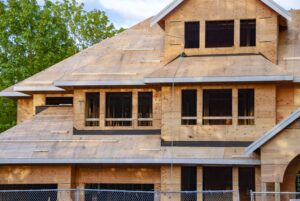 UK — Housing starts in the UK have lagged behind completions for the sixth successive quarter, including to the latest official data. Around 32,000 homes were started in the last quarter of 2024, compared to just over 49,000 completed during the same period, according to the Office for National Statistics. The number of starts is down from 37,000 in the preceding quarter and well below the average of 42,000 homes which have been started per quarter since the ONS resumed gathering the data after the pandemic in April 2022. Completions have remained more stable, rising in the last quarter of 2024 from 41,500 in the third quarter, with an average of just over 49,000 completions a year since the pandemic. Pocket Living chief executive Paul Rickard said: “By any measure these are a disappointing set of figures and continue to highlight the massive challenge the government has.”
UK — Housing starts in the UK have lagged behind completions for the sixth successive quarter, including to the latest official data. Around 32,000 homes were started in the last quarter of 2024, compared to just over 49,000 completed during the same period, according to the Office for National Statistics. The number of starts is down from 37,000 in the preceding quarter and well below the average of 42,000 homes which have been started per quarter since the ONS resumed gathering the data after the pandemic in April 2022. Completions have remained more stable, rising in the last quarter of 2024 from 41,500 in the third quarter, with an average of just over 49,000 completions a year since the pandemic. Pocket Living chief executive Paul Rickard said: “By any measure these are a disappointing set of figures and continue to highlight the massive challenge the government has.”